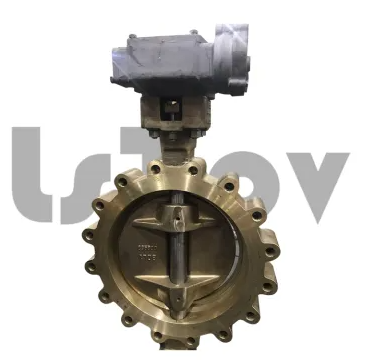What is a butterfly valve used for?
Introduction
In the intricate web of industrial and mechanical systems, valves play a pivotal role in regulating the flow of fluids. Among the various types of valves, the butterfly valve stands out as a versatile and efficient device. But what is a butterfly valve, and what are its applications? In this article, we will explore the functionality, types, advantages, and diverse applications of butterfly valves in modern industries.
Understanding Butterfly Valves
A butterfly valve is a quarter-turn rotary valve that controls the flow of a fluid or gas by rotating a disk or vane inside a pipe. The valve's name is derived from the appearance of its disk, which resembles the wings of a butterfly. This disk is connected to a central shaft, and when the valve is fully open, the disk is perpendicular to the flow direction, allowing for minimal resistance to fluid or gas flow. Conversely, when the valve is fully closed, the disk is parallel to the flow direction, completely blocking the passage.
Functionality of Butterfly Valves
Butterfly valves function on a simple yet effective principle of operation. When the valve's handle or actuator is turned, it causes the disk to rotate. The degree of rotation determines the degree of flow control. Here's a breakdown of how butterfly valves work:
Open Position: In the fully open position, the disk is perpendicular to the flow direction, allowing unrestricted flow of the fluid or gas through the pipe. This configuration minimizes pressure drop and turbulence.
Intermediate Positions: Butterfly valves can be partially closed to regulate the flow. When the disk is rotated to an intermediate position, it partially obstructs the flow, controlling the rate at which fluid or gas passes through the pipe.
Closed Position: In the fully closed position, the disk is parallel to the flow direction, completely blocking the passage. This shuts off the flow, providing a secure and tight seal.
Types of Butterfly Valves
There are several types of butterfly valves, each designed to suit specific applications. The main types include:
Concentric Butterfly Valve: In this design, the center of the disk's shaft is centered in the pipe. Concentric butterfly valves are commonly used in water treatment, HVAC systems, and low-pressure applications.
Eccentric Butterfly Valve: This design has the center of the disk's shaft offset from the pipe's centerline. Eccentric butterfly valves are ideal for high-pressure applications and those involving slurries or abrasive fluids.
Triple Offset Butterfly Valve: The triple offset design is more complex and features three levels of offset: the center of the shaft, the center of the disk, and the contact point with the seat. This design provides superior sealing and is used in demanding applications, including the oil and gas industry.
Applications of Butterfly Valves
Butterfly valves find applications across a broad spectrum of industries due to their versatility, ease of operation, and cost-effectiveness. Here are some of the key industries and applications where butterfly valves are commonly used:
Water and Wastewater Treatment:
Butterfly valves are extensively used in water treatment plants for regulating the flow of water through pipes and channels. They are also used in wastewater treatment facilities to control the flow of sewage and effluent.
HVAC (Heating, Ventilation, and Air Conditioning):
In HVAC systems, butterfly valves are employed to control the flow of air, water, or refrigerants in heating and cooling systems. They help maintain temperature and air quality in buildings.
Chemical Industry:
Butterfly valves are used in chemical processing plants to control the flow of various chemicals, acids, and corrosive substances. The choice of materials for the valve's construction is critical to withstand the corrosive nature of the fluids.
Oil and Gas Industry:
Butterfly valves are used in the oil and gas sector for applications such as controlling the flow of crude oil, natural gas, and refined petroleum products. Triple offset butterfly valves are often preferred for high-pressure and high-temperature applications.
Power Generation:
Butterfly valves are employed in power plants to control the flow of steam, cooling water, and other fluids. They are crucial for regulating the operation of turbines and boilers.
Food and Beverage Industry:
In food and beverage processing, butterfly valves are used to control the flow of ingredients, liquids, and food products. They are chosen for their sanitary design and ease of cleaning.
Marine Industry:
Butterfly valves are used in shipbuilding and maritime applications for controlling seawater, ballast water, and other fluids on vessels.
Advantages of Butterfly Valves
Butterfly valves offer several advantages that make them a preferred choice in various industries:
Quick Operation: Butterfly valves can be opened or closed rapidly with a quarter-turn, allowing for swift flow control.
Cost-Effective: They are generally more cost-effective than other types of valves, making them an attractive choice for budget-conscious projects.
Compact Design: Butterfly valves have a compact and lightweight design, making them easy to install and requiring less space compared to other valve types.
Low Pressure Drop: When fully open, butterfly valves create minimal resistance to fluid or gas flow, resulting in low pressure drop.
Ease of Maintenance: Their simple design and fewer moving parts make butterfly valves easy to maintain and repair.
Versatility: Butterfly valves can handle a wide range of fluids, from water and air to corrosive chemicals and high-temperature steam.
Conclusion
Butterfly valves, with their distinctive appearance and efficient functionality, are indispensable components in various industries. They provide precise control over the flow of fluids and gases, making them essential for processes ranging from water treatment and HVAC systems to chemical processing and power generation. With their cost-effectiveness, ease of operation, and adaptability, butterfly valves continue to play a vital role in the ever-evolving landscape of industrial and mechanical systems.



